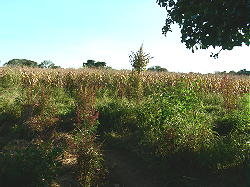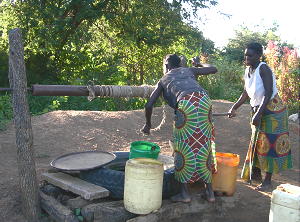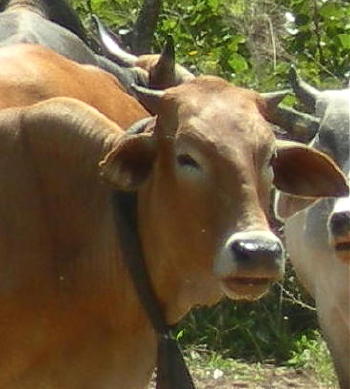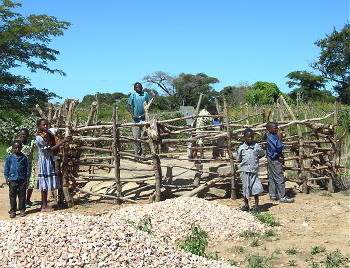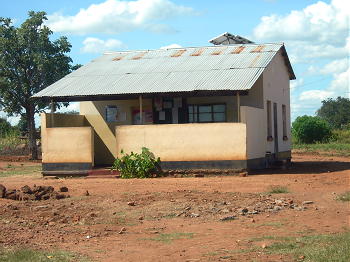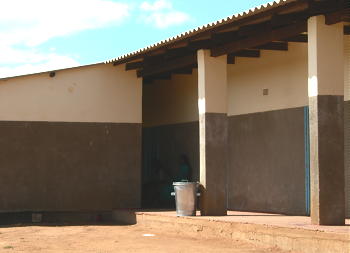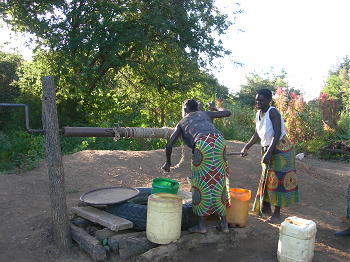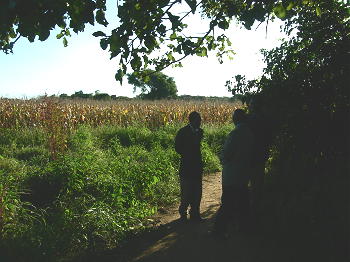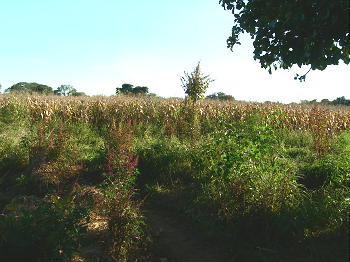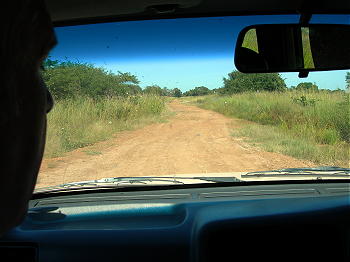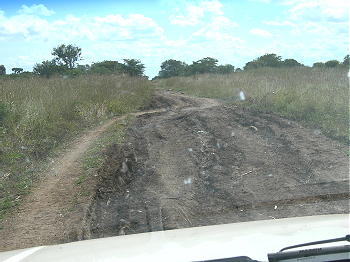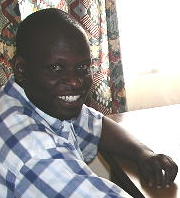 |
Highlights of the
various activities that we undertook in the last twelve months Report from Zambia LifeNets Director, Kambani Banda
July 3, 2006 |
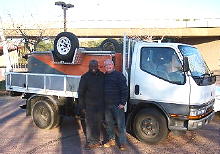 August 15, 2006 update showing the actual vehicle
and trailer that Kambani Banda and Jonathan Ndiya picked up in Durban, South
Africa and then drove back to Zambia. The photo on the left shows Kambani Banda
with Steve Serfontein.
August 15, 2006 update showing the actual vehicle
and trailer that Kambani Banda and Jonathan Ndiya picked up in Durban, South
Africa and then drove back to Zambia. The photo on the left shows Kambani Banda
with Steve Serfontein.
Cattle Restoration Project
Heifers
The heifer stock at the beginning of the year was twenty one, one died during the year, from causes that we attribute to natural wastage. The balance from the original head is twenty. A mortality of two in five years, though not acceptable to us is well below the area average. The twenty heifers are all in good health.
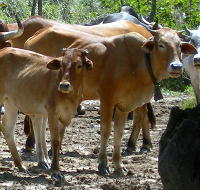 As
reported in last year, we sold Mr. Philemon Mafhosla’s one heifer because it
never dropped a calf since 2001. In its place, we bought one which now has
dropped a calf.
As
reported in last year, we sold Mr. Philemon Mafhosla’s one heifer because it
never dropped a calf since 2001. In its place, we bought one which now has
dropped a calf.
| United Church
of God Australia support LifeNets Zambia Projects --
United News
January-March 2005 |
During the year under review, the heifers dropped sixteen calves and only one still born. A calving rate of 80% and a mortality rate of 6% are comparable to those obtained on commercial farms in Zambia. Total live calves are now 48 bringing the total head to 68. This is a 209% increase in population from the original 22 in 2001.
The two bulls are in good health. From the increase in the cattle population, we are convinced that, they (bulls) are doing a commendable job. We should be thinking of replacing the bulls to prevent in breading.
In total we have passed on ten heifers to five families. Within these families, one heifer has dropped a calf. It is included in the forty eight reported above.
LifeNets continues to provide training and veterinary support to the project.
Some of the male calves (no longer calves) started work in year under review and contributed significantly to the maize out put reported in the section of the report discussing crop financing.
The heifer milk production remains steady providing the much needed protein. The health of the families are a loud testimony to the success of this project.
Crop Financing
Once again, using the funds repaid by farmers, we financed ten hectares of this years maize crop, one hectare per family and without recourse to LifeNets International for funding. This, in our opinion is a major step in achieving self sufficiency in the communities where we work– LifeNets pivotal mission.
|
|
We undertook three trips to supervise the project and ensure participants adhered to preset the cultural practices, taught during training. We are glad to report that the project participants see the value of running their farms in a business like manner. The yields bare testimony to our statement. We still need to make the same number of trips in the coming season; we restricted the cost to US$ 500 requested in the last report.
Yield
The past agriculture season was the best we have seen in living memory. As a result we expect that, when the harvest is complete, we will achieve an average yield of approximately 4 - 4.5 tones per family.
This is an increase of 23% over last year and beyond our wildest expectation and compares favorably with Zambian commercial farms. The yield is over 400% above the average yield in this area of 750Kgs per Hectare. This one fact alone should convince any skeptic who doubts the value of this project.
Crop Marketing
The current maize price is US$93.75 per ton. This price is far less than the production cost and below the Government floor price of US$ 225 per ton. The reason for the low prices is because supply far exceeds current demand.
The millers and traders take advantage of the situation to buy the maize cheaply, hold it and then release it on the market when the prices rise. Last year the prices in November rose to a record US$ 375 per tone.
This is where the crop pre financing component of this project is invaluable. In the year under review, we advanced the ten families participating in the project US$ 4,600. This advance is used to finance their living expenses while they wait for maize prices to rise. At current market prices, they would need to sell about 50 Tones of maize to raise the said advance.
We firmly believe that, come December 2006, they will only need 21 tones to repay these advances. In six short months, the project would have assisted its members add value to their crop by 276%. This is not a pipe dream, we did better than this season, and we will do it again.
The advances as well as the loans are secured by maize that is deposited with LifeNets agents in the area.
Medicines
We are happy to report that we received another consignment of medicines donated by LifeNets. The consignment included simple but life saving anti biotics, anti malarials, oral dehydration salts, Vitamins etc, to mention but a few. The donation value is about US$ 15,000.
The value of this donation should be viewed in the light of the fact that since its inception, we are proud to report, that there has not been one single death among our people or their children. This is in an area where death is every where and I am not exaggerating.
Wells
This project gave us a great headache. But, we are happy to report that we have made great progress in the year under review. We completed two wells at Jerry and Apren’s villages respectively. We fitted pumps on both wells which are working perfect.
|
|
Women no longer walk long distances, babies strapped on their backs, bare foot, carrying heavy buckets in a hot and scotching African sun in search of water. They can almost, “at the turn of a switch,” receive continuous safe drinking water. Thanks to LifeNets.
We are now working on the last well at Armstrong Maninga’s village. From the way it is going, we hope to complete this well perhaps before the feast. When this is done, we will be pleased to close this project. It is one of the most difficult we have done so far, but very worth while indeed.
Mr. Maxwell Kasakabantu has requested that LifeNets consider the possibility of drilling a well at his home stead. We cannot dig his well by the methods used in the three locations discussed above because the water table in his area is very deep. This involve hiring a professional drilling rig.. Government has attempted to dig wells in this area but they failed to find water. If we can find water, we will indeed do great service to this community. [comment from Victor Kubik: The cost of drilling such a well in this difficult spot will cost $7000. If funds and sponsorships are available, we would like to go ahead with this project that would bring water to the entire community].
Transport
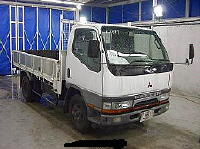
We are pleased to report that come, July 7, 2006 the truck that LifeNets donated at a cost US$ 12,310 should arrive in Durban South Africa. It is three tons and we have bought trailer for it within the sum donated.
We will soon be making an application to the Inland Revenue for permission to import this vehicle into Zambia duty free.
The truck will be very helpful in transporting member produce to the Market and moving them and their second tithe in form of maize meal, Goats chickens, blankets etc to the feast. We are very grateful for this donation
Scholarships
Three young people are processing applications to gain entrance into the university or college. These young people show a lot promise and potential to become professional people but their parents lack the means to finance their education. Once they are admitted to the institutions of higher learning, we will look to LifeNets to help finance the gap in their education fees through your scholarship scheme.
The New Truck That Will Haul Produce from Mumbwa to Lusaka

|

|
More Photos (taken by Melvin Rhodes in April 2006)
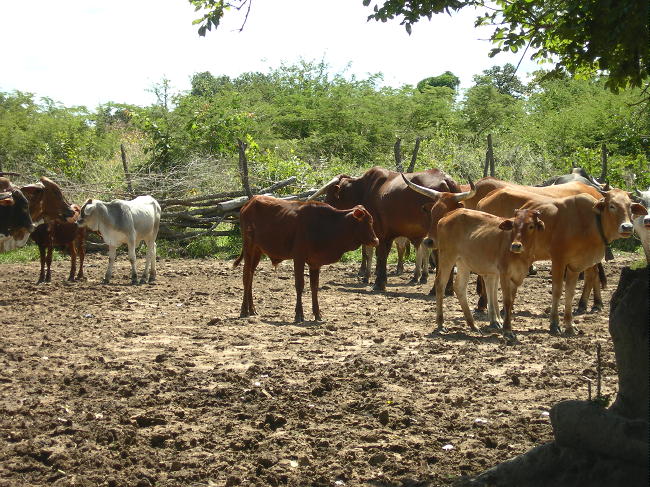
Our herd that that started at 22 head and is now 68
|
Kambani Banda with wife Shirley, sons Rangana in front and Joseph on the right
Well at Kasumpa Our medicines are administered through clinic in Nalubanda. Above is the old clinic, now replaced with new clinic below
|
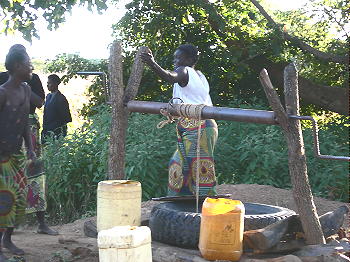 Well at Nalubanda
Our abundant maize crop!
100 miles of rough road from Lusaka to the Mumbwa region.
|
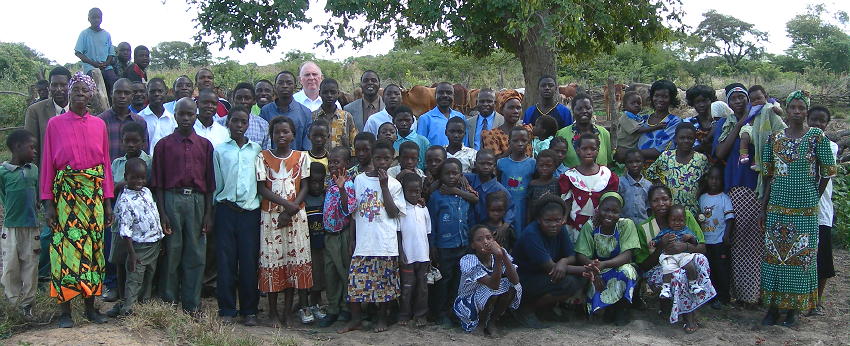
Kasumpa, Mumbwa, Zambia when pastor Melvin Rhodes (in back row) visited in April 2006
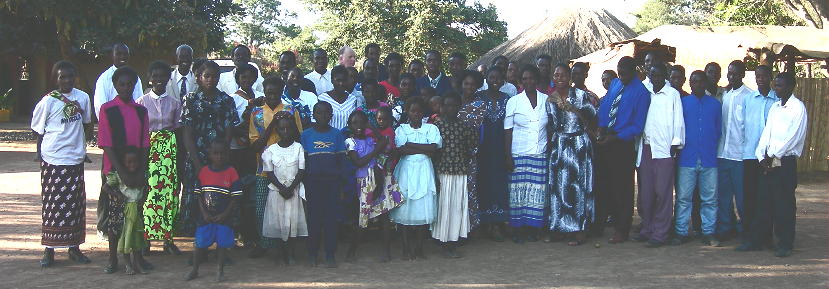
Nalubanda, Mumbwa, Zambia
 LifeNets in Zambia
LifeNets in Zambia